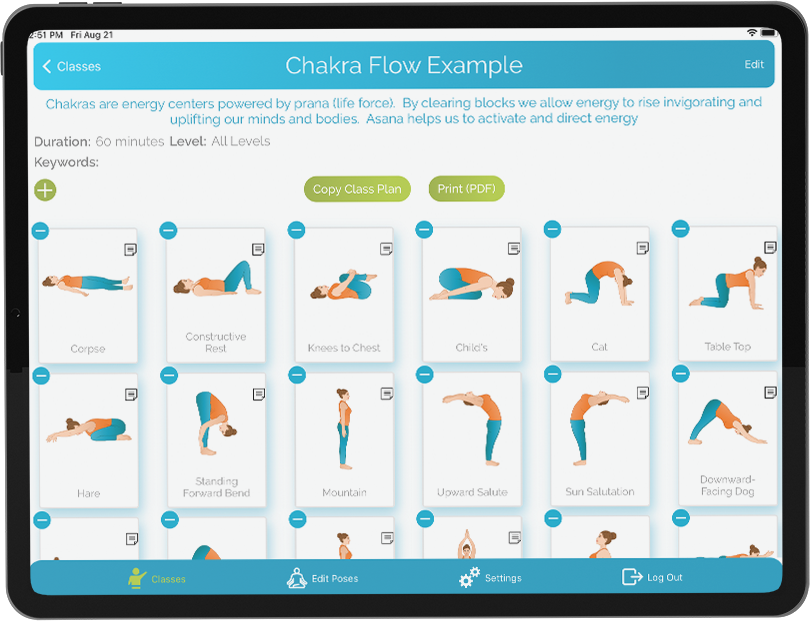Email Marketing Tips for Yoga Studios and Instructors
July 20, 2017 | 9 min read
Email marketing campaigns are among the most effective tools for building a new network of like-minded individuals online. However, yoga studios and instructors must remember that an email inbox is private and highly personal compared to social media—earning an invitation is not something that should be taken lightly. Rather, it is the first of many steps toward building a valuable long-term relationship online.
Find Your Inspiration
First, consider the following list of common reasons why people usually opt-in. Then, take the time to think about what inspires you. Think of your social media marketing strategy. What are you most passionate about? Take time now to consider how your passions can be conveyed in a unique way, and you will undoubtedly create email content subscribers will look forward to reading.
Why people subscribe:
- It’s informative. Many times, subscribers find great value in being notified of various things through email. For studios, this might include weekly updates on classes, schedules, and events. For independent instructors and yoga brands, this might also include health alerts, new product information, sales promotions, and other special events.
- It’s inspiring. Yoga isn’t over at the end of class. True practice demands personal introspection and action, both of which are difficult to maintain on a daily basis. Email is a great way to stay inspired, whether through tips, memes, quotes, podcasts, videos, or short stories.
- It’s entertaining. YouTube, Netflix, and Amazon have ushered in a new era of nonstop digital entertainment, all of which is accessible from a smartphone. As people grow more accustomed to 24/7 entertainment, yogis will see plenty of opportunities to entertain their fans with original and creative works.
As you brainstorm, remember to look to other brands and professionals for additional inspiration. Below are a few examples of successful health and wellness industry email campaigns that utilise a combination of the values listed above.
Take a moment to visit the websites above, and notice how they promote their newsletter as a way for visitors to remain informed, inspired, or entertained. Subscribe to a few that interest you, and evaluate the emails as you receive them. Are they delivering on the promise that got you to subscribe? If not, how could they be improved? Make notes, and generate ideas to implement in your own email marketing strategy.
Develop an Email Marketing Strategy
A comprehensive email marketing strategy can be broken down into 3 key stages: Opt-in, nurturing, and selling. Taking a tactical approach to these stages will not only build your subscriber base, but also increase your ability to gain new sales, students, and in some cases, form long term friendships!
Encourage people to opt-in. In the noisy world of the Internet, a new subscriber opt-in is one of the most valuable things you can hope to achieve. The most effective opt-in strategies share many common elements, which may include the following:
- Visible sign-up forms in prominent locations on important webpages, like your homepage.
- A clear pitch on why the visitor should subscribe, and what they should expect (e.g. “Sign up to receive a weekly email with our most-read blog posts!”)
- Privacy and spam policies—include a brief statement beneath the opt-in form that reassures the subscriber their information will be protected, and the content they receive will not be spam.
- Plug your newsletter in your blog and on social media. Use quotes, memes, and excerpts from previous email campaigns, and give fans an easy way to click-through to your sign-up form.
Nurture relationships with content. Next, use original content to become a dependable source of information, inspiration, or entertainment to your subscriber base. Remember that your relationship with subscribers is a two-way street.
Nurture your relationships by being thoughtful, engaging, and communicative. In addition to delivering dependable content, always include ways for subscribers to start a conversation or offer feedback. One way to accomplish this task is to always feature your social media accounts within the email. Then, create hashtags that subscribers can use to tag any posts they make about the content. Create a sense of community!
Finally, always remain mindful of the original intent of your email campaign. If you ask subscribers to opt-in for a weekly email, resist the urge to send more than 1 email per week unless it is absolutely necessary. By the same token, always draft, upload, and schedule your campaigns in advance to avoid missing days or falling behind (more on that in Step 4).
Knowing when to sell. Yoga is a deeply intimate practice, which is why it might seem difficult to “sell” yourself, your studio, or your products. However, yogis are people, and they need products and services. Remind yourself that your subscriber base is comprised of individuals who have voluntarily opted to receive regular emails because they like what you stand for. Honor that relationship, and promote your products and services accordingly.
In general, follow the 90-10 rule: Allocate 90% of your email content to delivering on the promise you made to get opt-ins, but feel free to use the remaining 10% for secondary content. If your email campaign promises weekly class updates, use the headline, body, and main image of the email to do just that, and save the bottom 10% for a sales coupon. On the other hand, if your online yoga store offers an email newsletter to keep up with the latest sales events, use the major elements of the email to promote the sales and encourage website visits, and use the bottom 10% to feature your newest Instagram photos. Look for ways to be creative, but honor your relationship with your readers by staying true to the original intent of your email newsletter.
Draft Your Messages
A well-crafted email message can accomplish a variety of important goals. When drafting your message, follow the tips below to develop an engaging headline, body, and supporting elements.
- Headline: Envision your ideal subscriber’s inbox. Chances are, it is overflowing with junk mail, Facebook notifications, and other unread messages. Think of ways to make your email stand out, using strong and succinct language to encourage recipients to open it.
- Body: Many individuals check email on their smart phone. Take this into consideration when drafted the copy of your message. Consider using bigger font, fewer words, subheadings, lists, and other elements that make the message legible on small screen sizes.
- Links: Be aware that email clients like Gmail and Microsoft Outlook may route your message to the recipient’s Spam folder if it contains a high number of links. Limit link usage, and encourage users to add your email address to their address book to ensure messages always reach their Inbox.
- Media: Email clients might not load certain media elements, like images and video thumbnails. Draft the email copy so it can stand alone, without supporting media, if need be. When drafting your email, you may also include a link that allows recipients to view the email in their browser instead. This allows recipients to navigate to your email as if it were an ordinary webpage, where all copy and media will be rendered correctly.
Avoiding your subscriber’s Spam folder is a major challenge. For more tips and tricks, visit this article by KISSMetrics.
Schedule Your Campaigns
Using email marketing software to schedule your campaigns is important for at least 3 reasons. First, it helps you log and manage important subscriber information, like name, email, and preferences. Additionally, email software provides a dashboard that can be used to schedule messages in advance, making it easier to nurture relationships without ever forgetting to deliver content. Perhaps most importantly, it provides a platform through which campaigns can be tracked (see Step 5 below). Below is a brief list of popular email marketing software that can be considered for nearly any campaign:
- MailChimp: This is the go-to option for yogis and studios who are just starting out. With MailChimp, you can send up to 12,000 messages per month for free. Packages without message limits start at $20 per month.
- CampaignMonitor: Used by more than 200,000 businesses worldwide, CampaignMonitor offers a variety of tools for automation, tracking, and analytics. With their basic package, you can send up to 2,500 emails to 500 people for only $9.99 monthly.
- Emma: Ideal for businesses with lots of customer data, Emma is a relatively affordable software that automates email campaigns while also making it easy to send custom emails based on customer behavior. Begin with 10,000 contacts for $89 per month.
- Delivra: Most email software companies charge on a “per contact” basis, meaning the price changes as your subscriber base increases. Delivra is unique in that they do not charge for any contacts with invalid email addresses, meaning you will always get maximum value out of your subscription. Starting at $75 per month for up to 3,000 contacts.
- InfusionSoft: At $199 per month, InfusionSoft might seem like an expensive option. However, superior features and customer support make this email marketing software one of the most popular tools among savvy small and medium sized businesses.
Learn from Analytics
Analytics are only available through email marketing software, like the options listed in the section above. Although specific metrics might vary from service to service (and package to package), there are 3 vital metrics that can significantly shape the success of your campaign. If the service you are using does not offer these insights, you should consider investing in one that does.
- Open rate: This metric shows the rate at which messages are opened. Use this metric to compare the effectiveness of different types of headlines, as well as email campaign delivery times (day of week, and time of day).
- Click-through rate: Often noted as CTR, this metric shows the rate at which readers who have opened the message click-through to your website. Use this metric to evaluate the effectiveness of your email content, including the structure, copy, and media.
Unsubscribes:
This metric tells you how many people opt-out of your newsletter. A sudden spike in this metric might indicate that content is no longer in alignment with the way the new
Posted in Business Tips, Marketing Tips




